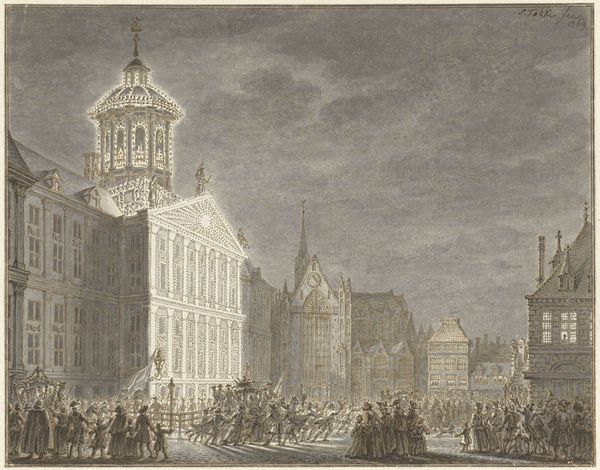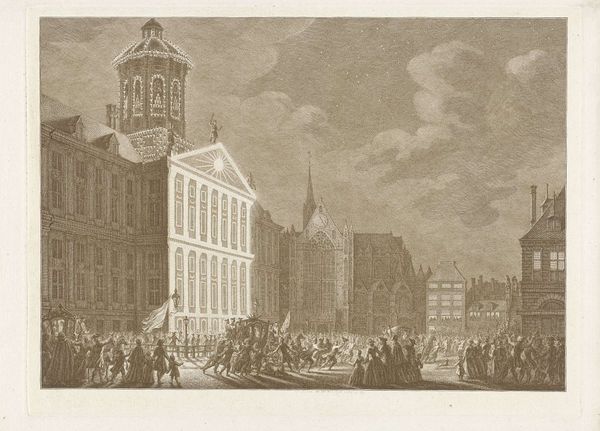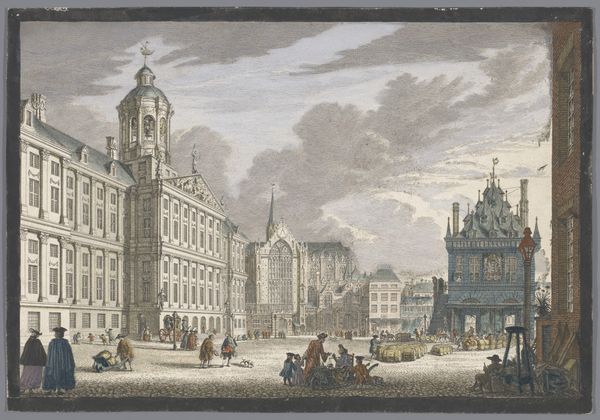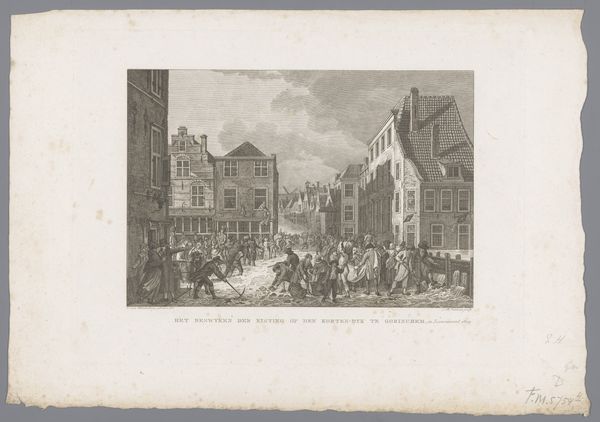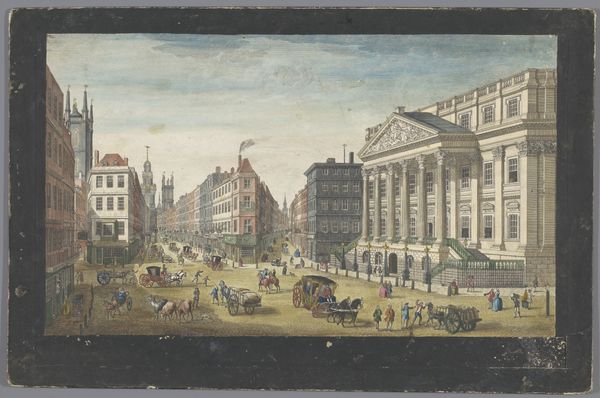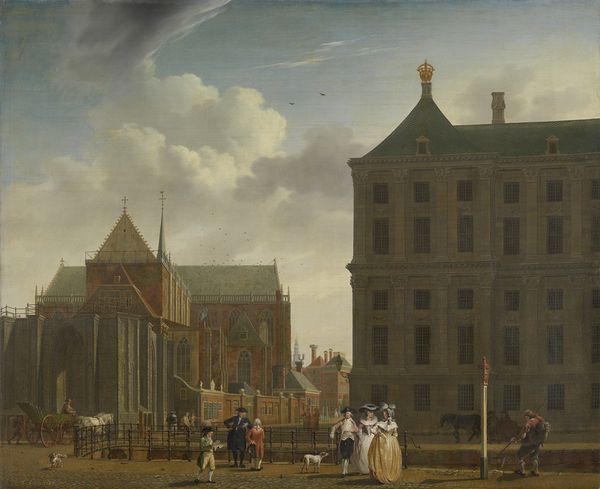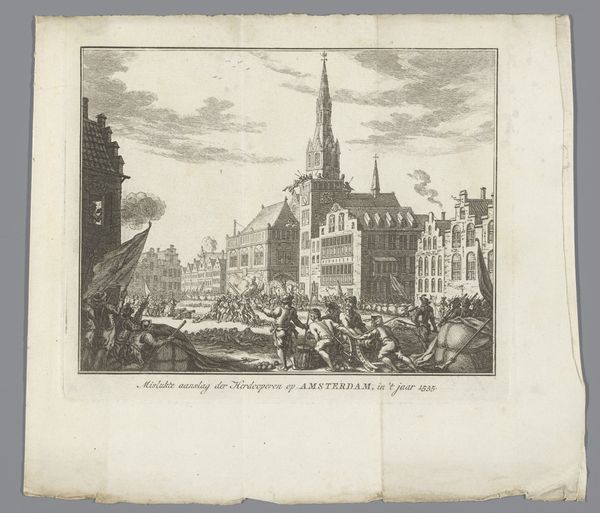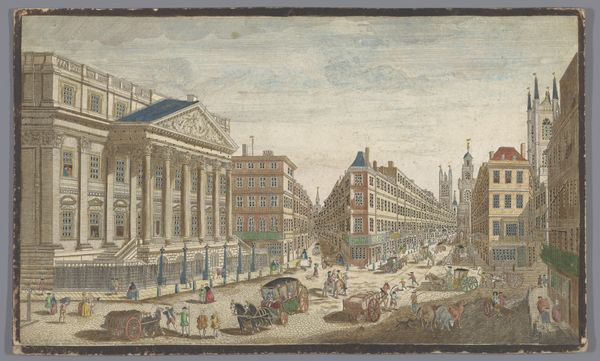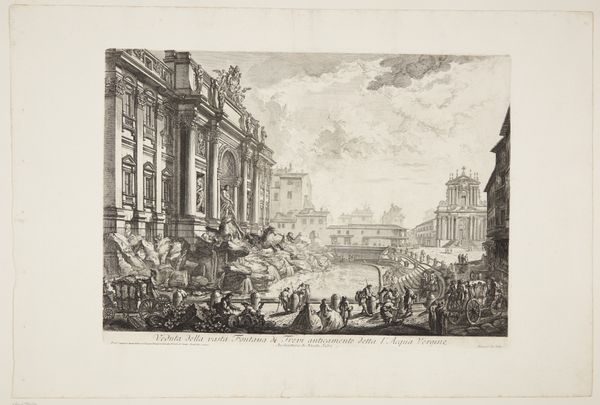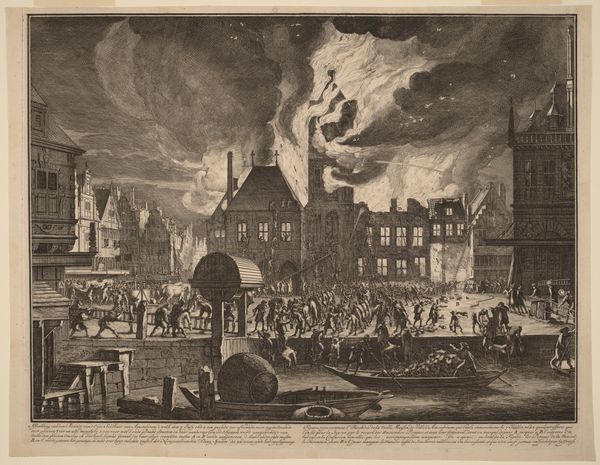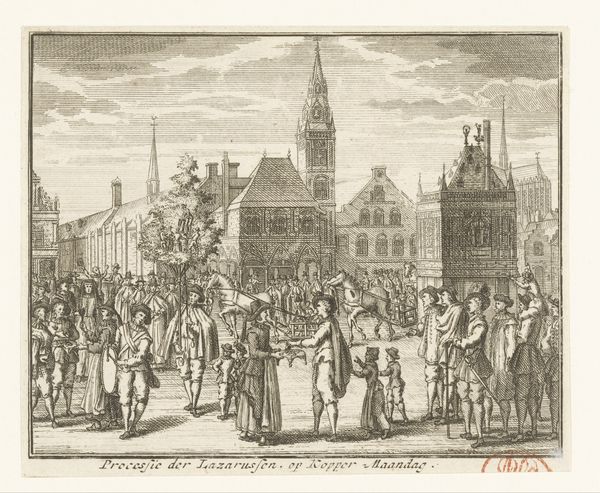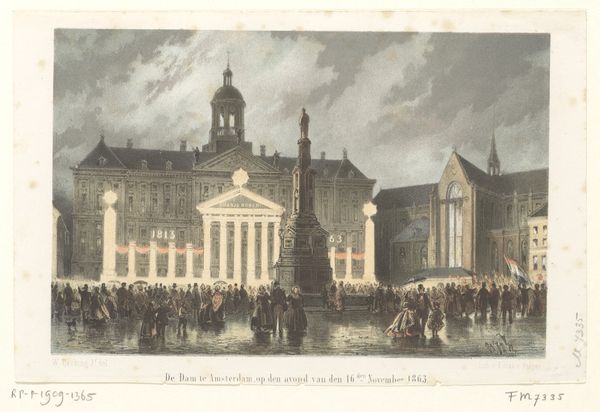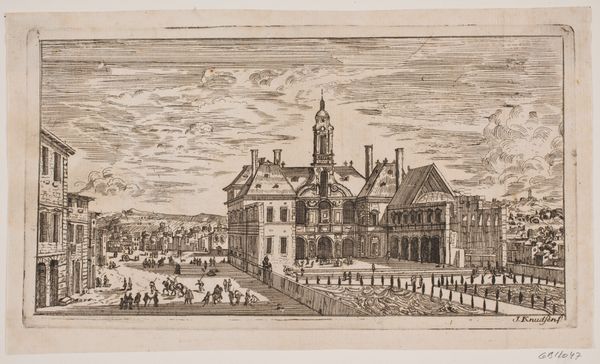
Gezicht op het Stadhuis te Amsterdam met de aankomst van Willem V en Wilhelmina van Pruisen op de Dam op 31 mei 1768 1768 - 1799
0:00
0:00
Dimensions: height 306 mm, width 450 mm
Copyright: Rijks Museum: Open Domain
Curator: Here we have an intriguing cityscape watercolor from between 1768 and 1799, titled "Gezicht op het Stadhuis te Amsterdam met de aankomst van Willem V en Wilhelmina van Pruisen op de Dam op 31 mei 1768," currently residing here at the Rijksmuseum. The artist remains anonymous, but their detailed capture is remarkable. Editor: It’s… gray. Very gray. Almost oppressive, even with the festive occasion depicted. The tones feel almost ashen. Curator: Absolutely. Think about the late 18th century. Rococo was fading. While visually light, the subject marks the arrival of William V, Stadtholder, and Wilhelmina of Prussia. Considering later historical contexts of shifting power and republican sentiments, there’s an inherent tension—a political and societal weight that underlies the surface celebration. Editor: I see that political subtext, but my eye is drawn to the paper itself. It’s interesting to think about the accessibility of watercolor versus oils during this time. Watercolors often imply a quick, perhaps preliminary sketch, something affordable and portable, almost journalistic in documenting this arrival. Curator: Exactly. Furthermore, the genre painting aspect points to broader questions about civic identity and power. The anonymous nature invites further interrogation: who made this? What perspectives might have been excluded or subtly coded into the visual language of the work? What socio-economic strata were present—or purposefully absent—from this representation of public life? Editor: It feels deliberately constructed. The perspective flattens the space; everyone is presented almost equally, although there are figures wearing nicer textiles—probably imported silks. I'm curious how readily available those imported dyes were and who profited most from these imports during that period. The gray is then the result of deliberate labor, acquiring pigments, applying the watercolor wash... Curator: The lack of clarity actually helps the work to transcend a purely celebratory, historical function. Its strength lies in asking these critical questions of itself and the moment in depicts. Editor: Right. The production, consumption and socio-economic ripples that are here visualized in such an underwhelming chromatic scale tell us of both that day of celebration but also a quiet reminder of production circumstances. Curator: Exactly, a layered piece whose value lies as much in the historical context as the application of watercolors. Editor: I’m left contemplating the materials—the paper, pigments, and process—and who had access to the art world.
Comments
No comments
Be the first to comment and join the conversation on the ultimate creative platform.
